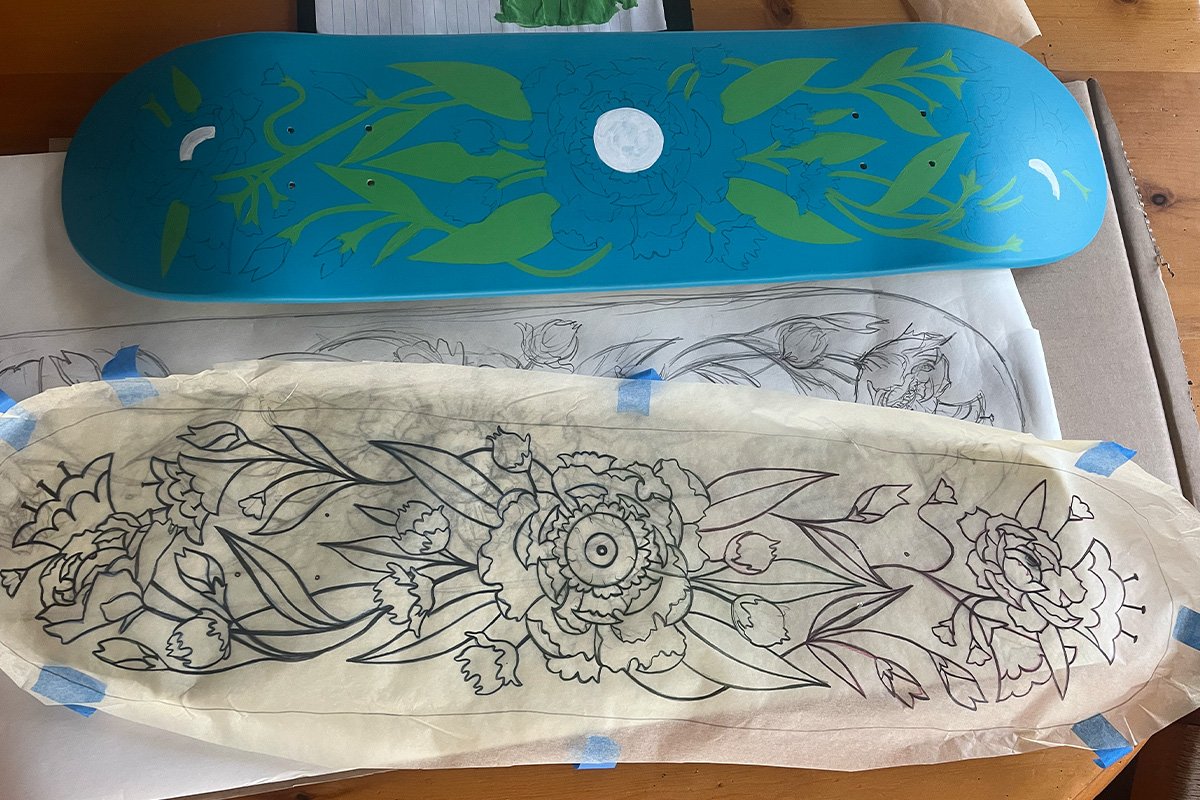Analog
Remember “Tracing Paper”? What a wondrous material, that’s become almost obsolete in my life. It’s whole aesthetic has always been, and will always be appealing: I love it’s etherial transparency, satisfyingly tactile nature, and the nostalgic association with art school productivity.
I’ve been holding on to a roll of canary yellow tracing paper since college (the better part of a decade) and was absolutely delighted when the opportunity to actually use it in the way it was intended finally came about. I was invited to create a piece of artwork for a worthwhile cause and the request came with some fun material parameters.
Carving the Future (CTF) is a rad non-profit with the mission of empowering youth through access to snowboarding and skateboarding. They provide gear, programing, lessons, and athletic scholarships for underserved youth — check them out, support, donate, it’s an all-around great organization.
Every year CTF hosts an art auction fundraiser. They ask local artist to use a blank skate deck as their canvas and donate it to the auction. When I was asked to participate I was flattered and bit nervous. 99% of the illustration work I do is digital, the ability to create a palette and hide layers in Procreate is much easier than mixing paint and handling a brush with real bristles.
How to transfer my digital graphic to a physical board? Time to bust out the old canary roll and start a drawing process akin to printmaking: tracing the design, applying layers of soft graphite like ink on a stamp, and using the pressure of a pencil stroke to replicate that drawing on a new surface.
I love tracing paper for the same reason I love a letterpress or a typewriter: it’s a physical process of artistic proliferation, authentic and analog.
Finished deck.



